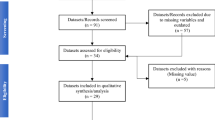Abstracts
All births (1211) were recorded in a rural area for 1985 by monthly domiciliary visits and the sociological characteristics were collected from mothers within a month. The analysis of 1201 births is presented: 52.7% were male births, 95.7% were delivered in village itself, 80.4% were delivered by trained dais, 99.5% were live born, 12.9% were born before 37 weeks of gestation, 61.5% were put to breast feed within 6 hours, 35% were of gravida 4 and above, 68.9% did not receive any antenatal care, 67.1% had not received any tetanus toxoid, 70.8% did not receive any folifer tablet, 0.8% had abortion and another 0.8% had still birth in preceeding outcome, 1.58% had lost a live born dead in preceding out come, 89.6% stopped breast feeding at conception, 31.7% had birth interval less than 2 years, but 2.2% had less than ore year, 2/3rd were born in second half of the year, 17.8% had taken extra food during pregnancy, 21.2% reduced the work after becoming pregnant, 9.5% were born to mothers of less than 20 years age, 98.5% of mothers were housewifes and 95.9% mothers were illiterate, 33.5% were born in nuclear family, 22.3% were living in Kacha' house, 34.8% had no electricity connection, 37.0% were born to land less, 42.2% had no radio in the house, 7.1% had no conveyance, 52.0% families had piped water supply. These findings have been discussed here.
Similar content being viewed by others
References
Government of India.Health for all by 2000 A.D. Report of the working group. Ministry of Health and Family Welfare. New Delhi: 1981.
Grant JP.The State of the Worlds Children. Geneva: UNICEF, 1991; pp. 102, 114.
Reddaiah VP, Nath LM. Infant mortality n rural area of CRHSP, Ballabgarth.Indian Pediatr 1978; 15; (7) 547–551.
Children and Women in India. A situational Analysis. UNICEF, New Delhi: 1990: pp-16, 17, 18, 20, 92.
Kumar S, Nath LM, Reddaiah VP. Breast feeding practices in a resettlement colony and its implications for promotional activities.Indian J Pediatr 1989; 56: 239–242.
Kapoor SK, Reddaiah VP, Lobo J. Anternatal care and perinatal mortality.Indian J Pediatr 1985; 52: 159–162.
Indira Bai K, Sastry VN, Reddy C. A comparative study of feeding pattern of infants in rural and urban areas.Indian J Pediatr 1981; 48: 227–280.
Talwar PP. Infant mortality. Some evidence from rural Madhya Pradesh (323–338). In: Jain AK, Visari P, ed.Infant Mortality in India. Differentials and Determinants. New Delhi: Sage Publications, 1988.
Kumar S. A study of breast feeding pattern in a resettlement colony of New Delhi. Thesis submitted at All India Institute of Medical Sciences. 1984; pp: 63.
Vijayraghavan K, Brahman GNV. National Nutritional Anaemia Prophylaxis Programme. An Evaluation in Andhra Pradesh.Nutrition News 1989; 10 (3): 1–3.
Reddaiah VP, Kapoor SK. Risk approach in maternal case. How beneficial is this approach in reality?Indian J Pediatr 1985; 52: 61–65.
Author information
Authors and Affiliations
Rights and permissions
About this article
Cite this article
Reddaiah, V.P., Kapoor, S.K. & Kumar, G. Epidemiological characteristics of new borns in a rural community. Indian J Pediatr 60, 783–789 (1993). https://doi.org/10.1007/BF02751048
Issue Date:
DOI: https://doi.org/10.1007/BF02751048




